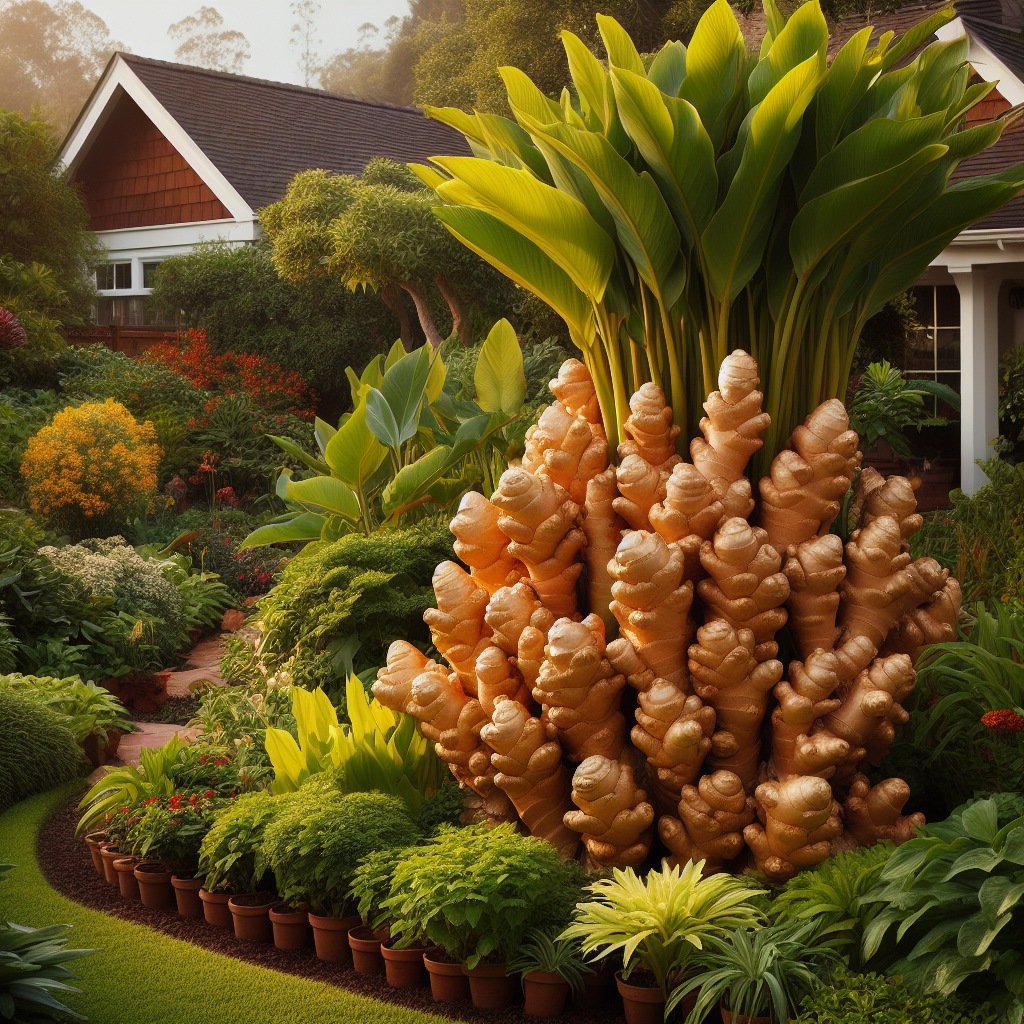Ginger (Zingiber officinale) is not just a spice; it’s a versatile herb that can thrive in your backyard. In this guide tailored for hobbyist gardeners, we’ll explore the intricacies of cultivating ginger, covering everything from its botanical traits to essential tips for a flourishing harvest.
Botanical Overview
- Botanical Name: Zingiber officinale
- Common Names: Keong, Khing, Gung, Halia, Jahe, Luya, Shooga
- Family: Zingiberaceae, the ginger family
Plant Description
Ginger is a perennial herb indigenous to Asia, boasting slender strap-like leaves and inconspicuous green flowers. Its growth reaches about one meter in height, with the true magic happening underground—within the rhizomes. The plant requires well-drained soil, a frost-free environment, and an annual rainfall of approximately 1500 mm or adequate irrigation. Ginger prefers loamy or fertile alluvial soils enriched with well-rotted manure or compost. It cannot tolerate waterlogging and thrives in light shade, often facilitated by companion plants like pigeon pea in permaculture settings.
Uses
- Culinary Delight: Ginger rhizomes are culinary treasures, used to infuse flavor into cakes, chutneys, curries, candies, and beverages. They come in various forms—dry, powdered, preserved in syrup, or crystallized.
- Fresh Delicacy: Young ginger rhizomes, known as stem ginger or green ginger, can be peeled and consumed raw in salads, pickled, or cooked in syrup. The slightly spicy shoots are also a culinary delight.
Planting Details
- Preparation: Allow ginger to sit in a well-ventilated pantry until small ‘eyes’ (buds) develop. Cut the large rhizome into pieces, each weighing between 50 – 80 g, ensuring each piece has at least two developing ‘eyes.’
- Drying: Let the cuts dry out before planting to reduce the risk of fungal infections.
- Optimal Planting Time: Plant ginger in spring when the soil has warmed up, avoiding cold, wet soils. Plant on ridges, approximately 30 cm apart, with 15-23 cm between plants.
- Planting Setts: Use setts (small rhizomes) with one or two buds. Plant them 5-10 cm deep.
Harvest
- Timing: Harvest rhizomes about 8 months after planting when the leaves yellow or die. For home gardeners, careful digging at the side of a clump allows for selective harvesting.
Tips for Hobbyist Gardeners
- Avoid Waterlogging: Ginger detests waterlogging, so ensure well-drained soil to prevent root rot.
- Companion Planting: Consider planting ginger alongside companions like pigeon pea to provide the necessary light shade.
- Patience is a Virtue: The magic of ginger unfolds slowly; be patient during the 8-month growth period.
- Selective Harvesting: Home gardeners can enjoy a continuous supply by selectively harvesting rhizomes as needed, without uprooting the entire plant.
Adds a fragrant touch to your garden
Cultivating ginger at home not only adds a fragrant touch to your garden but also provides a fresh supply for your culinary adventures. By understanding the nuances of ginger growing—from optimal planting to selective harvesting—you can embark on a journey to nurture this versatile herb right in your backyard. Spice up your garden and kitchen with the warmth and flavor of homegrown ginger, bringing a touch of the exotic into your daily life.
